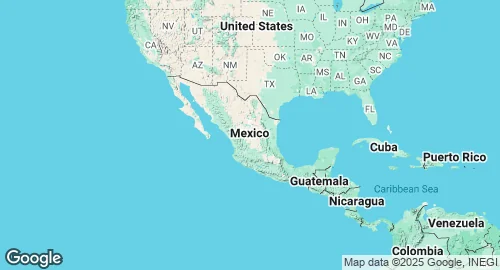Mexico Military Forces 🇲🇽
Military Strength Overview
| 🛩️ Air Force | 433 active aircraft |
| ⚓️ Naval forces | 201 ships in fleet |
| 🪖 Active Troops | 216,000 personnels |
| ⛑️ Reserve Troops | 81,500 personnels |
| 👮♀️ Paramilitary | 111,900 personnels |
Defense Statistics & Key Metrics
| Population | 129.7 million (2023) |
| GDP | $1.8 trillion (2023) |
| GDP per capita | $13790 (2023) |
| Military Budget | $16.7 billion (2024) |
| Share of GDP in Milex | 0.9% (2024) |
| Share of Govt Expenditures | 3.0% (2024) |
| Military spends per capita | $128 (2024) |
| Inflation Rate | 4.72% (2024) |
| Military Personnel | 341,000 (2020) |
Strategic Overview in 2025
The Mexican Armed Forces are primarily an internally focused military, shaped by a long-standing and violent conflict with powerful transnational criminal organizations. This strategic orientation dictates its force structure, equipment, and operational posture, which are geared towards counter-insurgency and law enforcement support rather than conventional warfare.
Military Structure and Capabilities
Mexico's military is composed of two independent entities: the Secretariat of National Defense (SEDENA), which includes the Army and Air Force, and the Secretariat of the Navy (SEMAR), which controls the Navy and Naval Infantry. There is no joint command structure below the President.
The primary operational focus of the Mexican military is the domestic war against drug cartels. This has led to a highly militarized approach to public security, with the armed forces often taking on roles traditionally held by civilian police forces. This internal conflict has shaped the military's equipment and modernization priorities. Recent acquisitions and modernization plans include the purchase of 340 Cobra 4 light armored vehicles to replace aging Humvees, and plans to acquire new transport aircraft and naval vessels. These acquisitions are aimed at enhancing mobility and operational effectiveness in internal security operations. The military also plays a significant role in counternarcotics and border security, often in cooperation with the United States.
Strategic Trends
The defining strategic trend for the Mexican military is the ongoing conflict with powerful and well-armed cartels. Groups like the Jalisco New Generation Cartel (CJNG) and the Sinaloa Cartel have evolved into sophisticated paramilitary organizations, challenging the state's authority in significant parts of the country. This has led to an increasing reliance on the military for internal security, a trend that is likely to continue.
Mexico's military budget has seen a significant increase in recent years, largely to fund the National Guard and other security operations. However, reports on the exact figures can be conflicting. This increased spending reflects the growing costs of the internal conflict.
Internationally, Mexico's most critical military relationship is with the United States. This partnership is complex, involving close cooperation on border security and counternarcotics, as well as significant U.S. aid and training. However, there are also tensions, particularly regarding U.S. pressure on Mexico to control migration and differing strategies for combating cartels. Mexico officially maintains a policy of neutrality in international conflicts.
Mexican Military Budget History
Population and Military Personnel Trends
GDP and Inflation Rate Trends
Mexican Firearms Development
| Model | Category |
|---|---|
| FX-05 Xiuhcoatl | Assault rifle |
Military Expenditure: SIPRI Milex.
